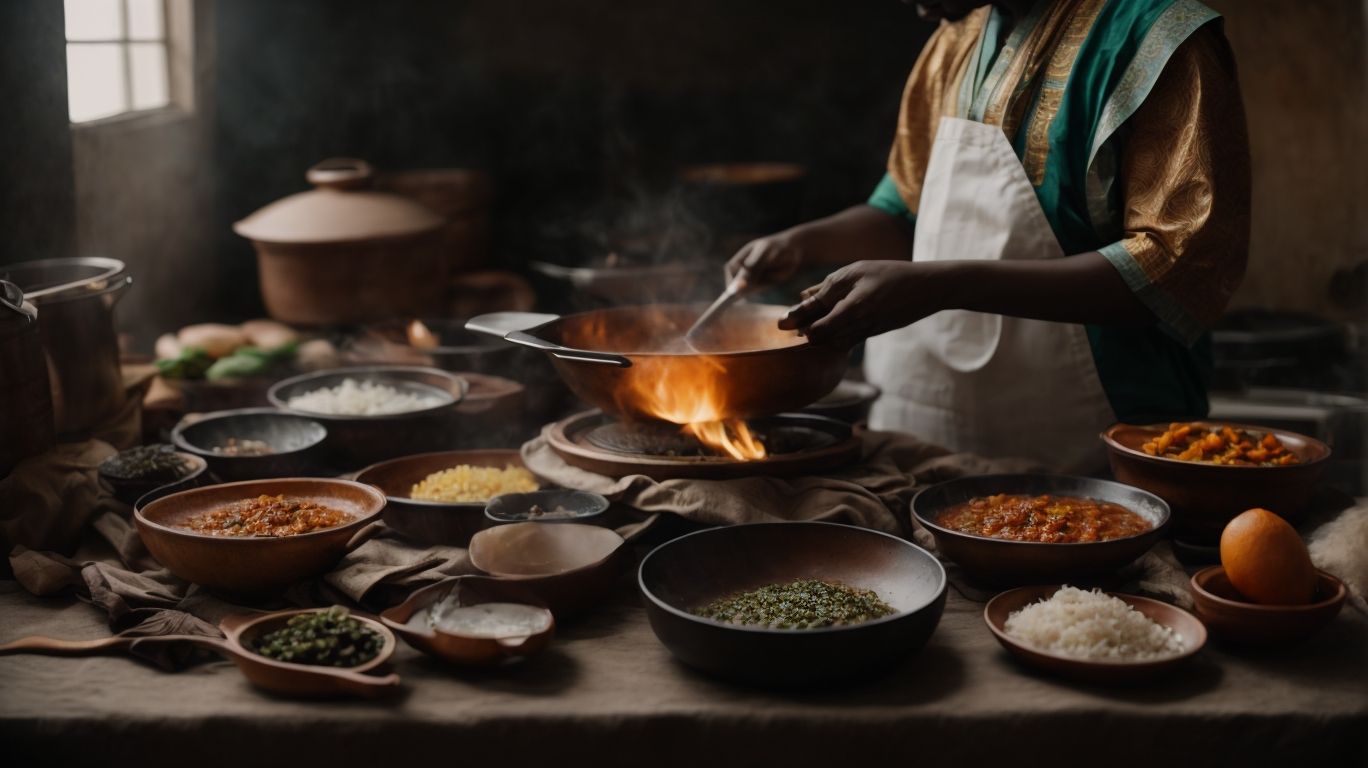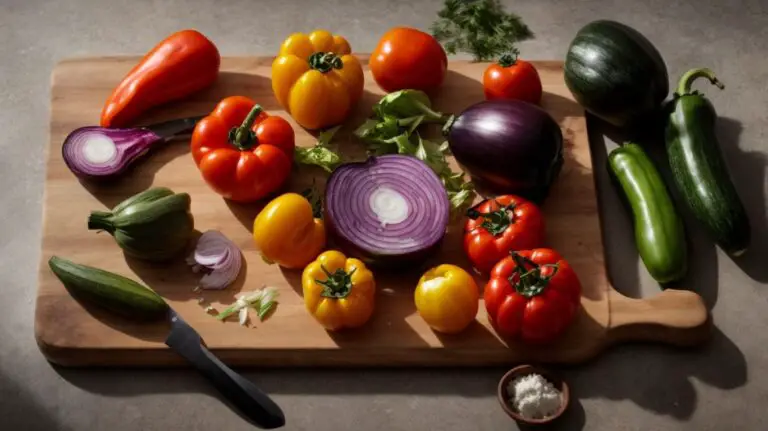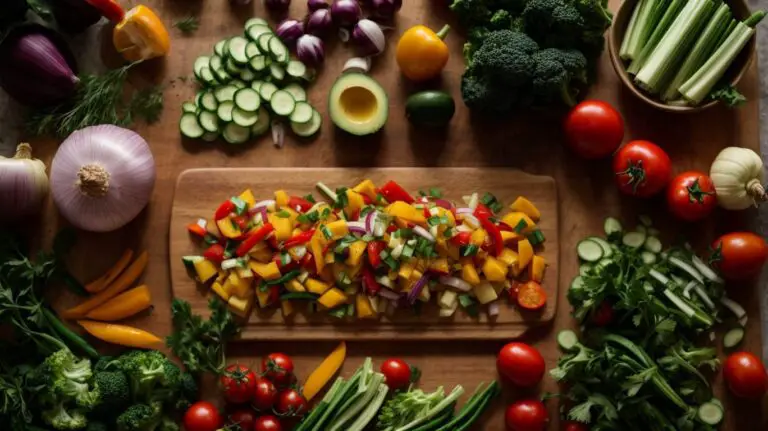How to Cook Ugali?
Have you ever wondered what exactly Ugali is and how to make it at home?
In this article, we will explore the origins of Ugali, its key ingredients, the step-by-step process to prepare it, and some tips for achieving the perfect consistency.
We will discuss what dishes pair well with Ugali and how to store and reheat any leftovers.
If you’re curious about this popular African staple, keep reading to learn how to cook Ugali like a pro!
Key Takeaways:
About the Author: Chris Poormet
Chris Poormet, the owner of Poormet.com, is a renowned culinary expert and award-winning blogger known for sharing delectable recipes and insightful tips that have earned him the prestigious title of Culinary Blogger of the Year. With a background as a skilled chef and accolades in food photography, Chris Poormet has cultivated a devoted following of food enthusiasts eager to experience his culinary creations.
His passion for food extends beyond the kitchen, as he uses his expertise in food photography to capture the essence of each dish, making his blog a visual feast for his followers. Through Poormet.com, Chris not only showcases his culinary skills but also shares personal stories, cooking hacks, and behind-the-scenes glimpses into his adventures in gastronomy.
His unique approach to blending flavors and textures has garnered widespread acclaim, solidifying his reputation as a trailblazer in the culinary world. Whether it’s a simple weeknight meal or an elaborate feast, Chris Poormet’s recipes are always a hit among his loyal audience.
What is Ugali?

Credits: Poormet.Com – Christopher Ramirez
Ugali, a staple food in many African countries, is a dense and hearty dish made from cornmeal or maize meal cooked with water to achieve a thick, porridge-like texture. This traditional delicacy, which has its roots in East Africa, can also be prepared using white cornmeal, sorghum, or millet, reflecting the diverse culinary heritage of the region influenced by the Portuguese invasion.
Depending on the region and local customs, Ugali might go by different names such as Sadza in Zimbabwe, Nsima in Malawi, or Posho in Uganda. The variations in preparation and naming showcase the significance of this dish across the continent. In some areas, it is common to eat Ugali with a variety of stews, vegetables, or meats like sukuma wiki, nyama choma, or fish. The simplicity of ingredients and the filling nature of Ugali make it a popular choice for sustaining energy and providing essential nutrients in African households.
What is the Origin of Ugali?
The origin of Ugali traces back to East Africa, where this indigenous dish gained popularity and evolved over centuries, influenced by various cultural and historical factors. The Portuguese invasion of the region also contributed to the culinary landscape, introducing new ingredients and cooking techniques that shaped the preparation of Ugali as it is known today.
During the Portuguese invasion, maize, a staple ingredient in Ugali today, was introduced to the region, replacing traditional grains like millet and sorghum. The incorporation of maize transformed the dish, making it more accessible and widely consumed across various communities.
The adoption of maize also led to changes in cooking methods, with the introduction of the cooking process involving constant stirring to achieve the desired consistency and texture of the dish.
This blending of indigenous culinary practices with external influences created a unique fusion that continues to define Ugali’s cultural significance in East Africa.
What are the Ingredients for Ugali?
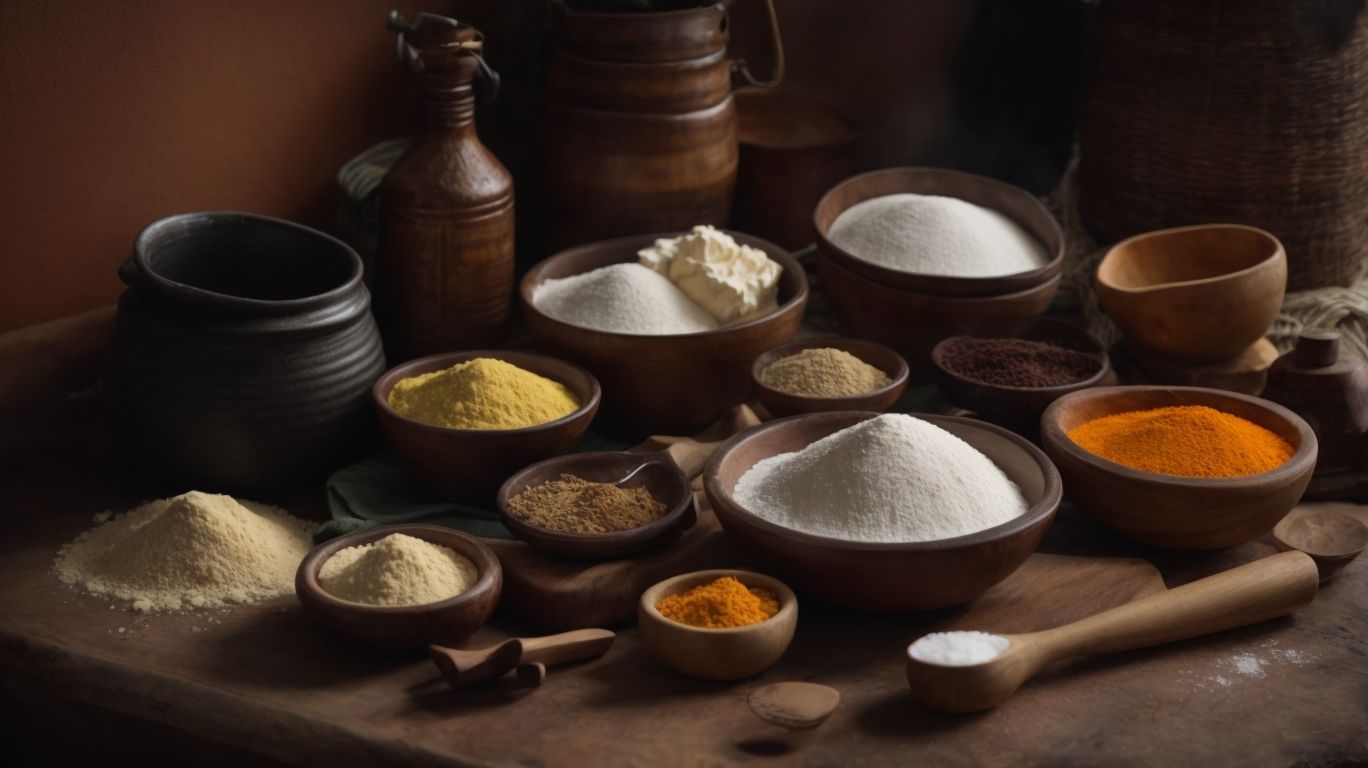
Credits: Poormet.Com – Kevin Scott
The ingredients required to prepare Ugali include white cornmeal, sorghum, or millet as the primary grains, water for cooking, and a pinch of salt to enhance the flavor. These simple yet essential components come together to create a fulfilling and nutritious dish that forms a vital part of the staple diet in many African households.
White cornmeal, sorghum, and millet serve as the foundation of Ugali, providing a hearty base rich in carbohydrates and essential nutrients. The water acts as the medium to blend these grains, transforming them into a thick, hearty consistency that symbolizes comfort and tradition across various African regions. The addition of a mere hint of salt not only elevates the taste but also balances the flavors, making this humble dish a perfect accompaniment to a wide array of stews and sauces.
How to Make Ugali?
Preparing Ugali involves a simple yet precise process that begins with boiling water and gradually adding flour while stirring continuously to achieve the desired texture and consistency. The careful balance of water and flour, combined with the right amount of cooking time, results in a smooth and lump-free Ugali that is both satisfying and flavorful.
To start, bring water to a boil in a deep saucepan, ensuring it reaches the ideal temperature for the flour to cook evenly. It’s important to maintain a gentle simmer to avoid scorching or uneven cooking. Once the water is ready, slowly sprinkle the flour into the pan while stirring constantly to prevent lumps. Gradually incorporating the flour allows it to absorb the water evenly, creating a smooth mixture. The key is to stir vigorously, breaking up any clumps that may form as the Ugali thickens.
Step 1: Boil Water
The first step in preparing Ugali is to bring water to a boil in a pot or saucepan, ensuring that the water reaches a rolling boil before proceeding to the next stage of mixing in the flour.
Getting the water to the right temperature is crucial as it sets the foundation for the entire dish. The boiling water not only helps to sterilize it but also creates the ideal environment for the flour to blend seamlessly. When the water is at a rolling boil, it signifies that it has reached the optimal heat level for the maize flour to be added. This initial step is essential for ensuring the proper texture and consistency of the Ugali, as it kickstarts the process of creating a smooth, lump-free mixture.
Step 2: Add Flour
Once the water has reached a rolling boil, gradually add the flour to the pot while stirring continuously to prevent lumps and ensure the flour is evenly distributed, leading to a smooth and lump-free Ugali.
Adding the flour to the boiling water is a crucial step in the process of making Ugali. This step is essential for achieving the desired texture and consistency of the dish. By stirring the flour continuously into the boiling water, you allow it to blend seamlessly, ensuring that there are no clumps in the final product. The consistent stirring helps in evenly distributing the flour, resulting in a creamy, lump-free Ugali that is both visually appealing and enjoyable to consume.
Step 3: Stir and Cook
As the flour is incorporated into the boiling water, continue to stir the mixture vigorously to prevent clumping and promote even cooking, ensuring that the Ugali retains its traditional texture and consistency throughout the cooking process.
In the third step of making Ugali, the stirring process is crucial for achieving the desired smoothness. This step involves maintaining a constant motion, using traditional techniques like a wooden spoon or stick. Stirring the mixture ensures that the maize flour is evenly cooked, absorbing the water properly. This continuous stirring action not only prevents lumps from forming but also aids in developing a cohesive texture.
Step 4: Form into a Ball
Once the Ugali reaches the desired thickness and consistency, remove it from the heat and shape it into a ball or mound using a wooden spoon or spatula, ready to be served alongside delicious accompaniments such as stews or vegetables.
The final step of shaping Ugali into a ball before serving not only adds an appealing presentation aspect but also reflects the artistry of traditional African cuisine.
-
Shaping the Ugali signals the completion of a labor-intensive cooking process and elevates it from a simple staple to a centerpiece of a meal.
-
When served with flavorful stews, the round shape of Ugali provides a perfect vessel to scoop up the rich sauce, enhancing the overall dining experience.
-
Alternatively, pairing Ugali with fresh, steamed vegetables creates a nutritious and balanced meal, giving it a versatile role in a variety of culinary contexts.
Tips for Perfect Ugali
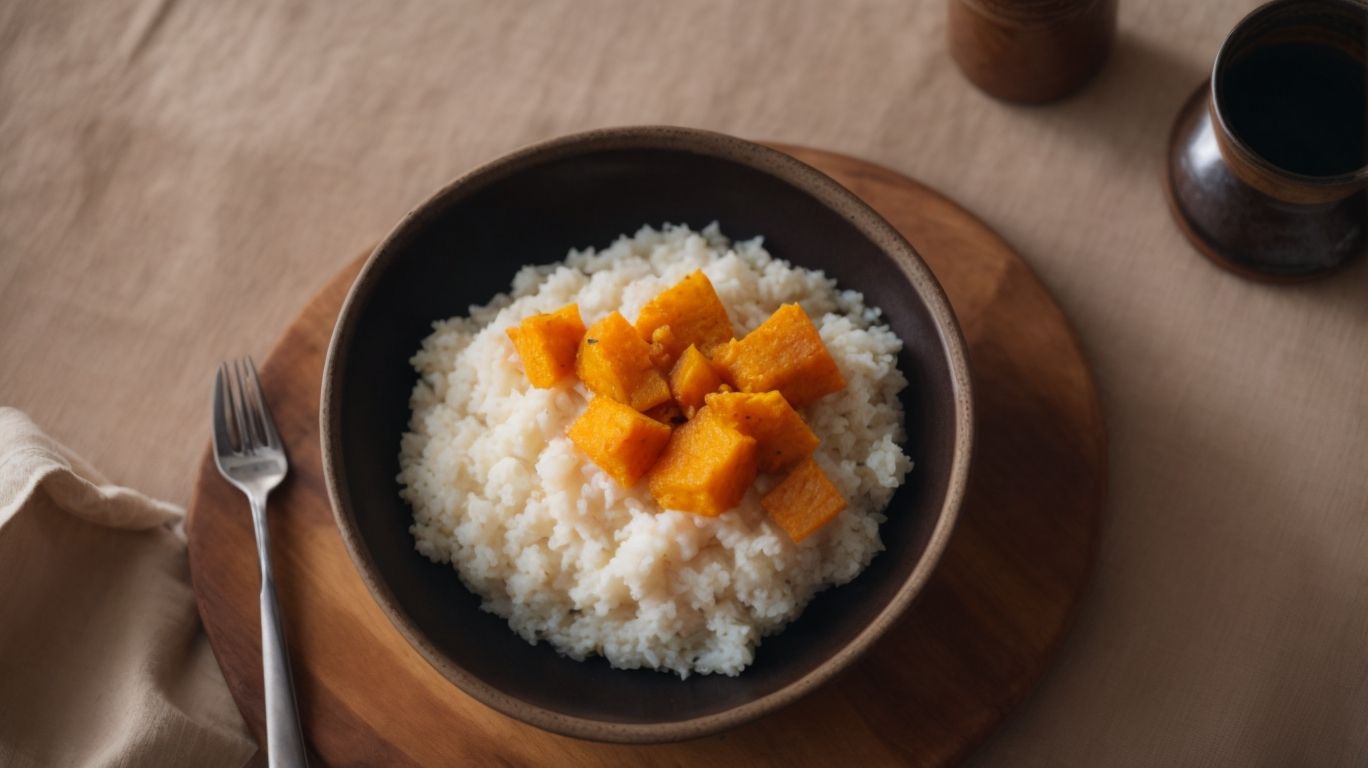
Credits: Poormet.Com – Joseph Ramirez
Achieving the perfect Ugali involves following a few essential tips, such as using the right type of flour, adding salt to taste, and stirring constantly to maintain the desired texture and consistency throughout the cooking process.
When selecting the flour for your Ugali, opt for a fine-textured maize flour that is preferably sifted to ensure a smooth and lump-free final dish. The quality of flour significantly impacts the final outcome of your Ugali, affecting its texture and taste. Additionally, adjusting the salt to taste is crucial as it enhances the flavors of the dish while balancing the sweetness of the maize. Remember to start with a small amount and gradually add more according to your preference for a perfectly seasoned Ugali.
Use the Right Type of Flour
Selecting the right type of flour, such as maize flour or grain-based varieties, is crucial for ensuring the proper texture and consistency of Ugali, as different flours can yield varied results in the final dish.
Maize flour, commonly known as cornmeal, is the traditional and most widely used option for making Ugali in East Africa. Its coarse texture and slightly sweet flavor add a unique taste to the dish, creating a staple comfort food in the region. On the other hand, wheat flour, with its finer consistency, produces a smoother Ugali that may appeal to those who prefer a softer texture. Other grain-based flours like millet, sorghum, or cassava can also be used to make Ugali, each imparting its distinct flavor profile and nutritional benefits.
Stir Constantly
Maintaining a constant stirring motion while cooking the Ugali is essential to prevent lumps, ensure even distribution of ingredients, and achieve a smooth and lump-free consistency in the final dish.
Continuous stirring plays a pivotal role in the Ugali-making process as it helps break down any clumps that may form, ensuring a uniform texture throughout. When stirring, it’s crucial to use a wooden spoon or spatula to avoid scratching the cooking vessel and to keep the mix from sticking at the bottom. Proper stirring technique involves a gentle, circular motion that covers the entire surface area of the pot, allowing the maize flour to evenly absorb the water and cook evenly.
Add Salt to Taste
Adding salt to taste is a crucial step in preparing Ugali, as it not only enhances the flavor of the dish but also balances the overall taste profile, ensuring a satisfying culinary experience with each bite.
When preparing Ugali, the inclusion of salt serves as a fundamental element that elevates the dish to a new level of deliciousness. The salt seasoning not only brings out the natural flavors of the maize meal but also helps in achieving a harmonious blend of tastes that tickle the taste buds.
It’s essential to strike the right balance with the amount of salt added – too little may result in a bland taste, while excessive salt can overpower the palate and distort the intended flavors of the dish.
By judiciously incorporating the optimal amount of salt, one can ensure that every mouthful of Ugali provides a delightful gustatory experience, where each ingredient shines through in perfect harmony.
What to Serve with Ugali?
Ugali pairs perfectly with a variety of flavorful accompaniments, including sukuma wiki, stewed meats or vegetables, and hearty dishes featuring beans or lentils, creating a wholesome and satisfying meal that celebrates the diverse flavors of African cuisine.
Known as the staple food in many East African countries, Ugali offers a neutral yet comforting base that harmonizes beautifully with the bold and vibrant flavors of these traditional accompaniments. Sukuma wiki, a dish made from collard greens sautéed with onions and tomatoes, adds a burst of freshness and nutrients to each bite of the thick maize porridge. Pairing Ugali with succulent meat stews or vegetable curries enhances the overall dining experience by providing contrasting textures and rich tastes.
For a more protein-rich option, incorporating bean-based preparations like red kidney beans in a savory sauce or lentil stews lends a hearty and satisfying element to the meal. These wholesome ingredients not only complement the simplicity of Ugali but also showcase the culinary diversity and regional specialties that define African cuisine. Whether you’re savoring Ugali with sukuma wiki or indulging in a flavorful bean stew, each bite tells a story of tradition and innovation in African gastronomy.
Sukuma Wiki
Sukuma wiki, a popular Kenyan vegetable dish, serves as a delightful accompaniment to Ugali, providing a nutritious and flavorful addition to the meal that complements the dense texture of the cornmeal-based staple.
Known for its simplicity and robust flavor, sukuma wiki often features collard greens sautéed with onions, garlic, and tomatoes, creating a vibrant and satisfying dish. This traditional combination offers a perfect balance of textures and tastes, with the tender greens melding harmoniously with the hearty Ugali. Rich in essential nutrients like vitamin A, C, and K, sukuma wiki not only enhances the overall dining experience but also contributes to a well-rounded, healthy diet.
Stewed Meat or Vegetables
Stewed meats or vegetables, commonly featured in African cuisine, offer a hearty and protein-rich option to accompany Ugali, enhancing the overall meal with savory flavors and diverse textures that complement the dense consistency of the cornmeal dish.
Meat stews, such as the popular Kenyan Nyama Choma or Nigerian Egusi soup, provide a rich depth of flavor that seeps into every bite of the Ugali, creating a symphony of tastes in each mouthful. The slow-cooking process allows the meats to become tender and juicy, infusing the dish with a satisfying meaty essence.
On the other hand, vegetable stews like South African Chakalaka or Ghanaian Groundnut soup bring a burst of freshness and vibrancy to the plate, balancing out the meal’s richness with their colorful medley of vegetables and aromatic spices.
Beans or Lentils
Beans or lentils, staple legumes in East African cuisine, serve as a nutritious and fiber-rich addition to Ugali, offering a balanced and satisfying meal that combines the wholesome goodness of pulses with the comforting texture of the cornmeal dish.
In East African culinary traditions, beans and lentils play an integral role in providing a complete source of plant-based proteins, essential vitamins, and minerals to complement the corn-based staple.
These legumes not only enhance the nutritional profile of the meal but also contribute to its flavor and texture, creating a harmonious blend of ingredients that cater to both taste and health.
The versatility of beans and lentils allows for a wide variety of dishes, from hearty stews to savory spreads, making them a versatile and essential component in the regional gastronomy.
How to Store Leftover Ugali?
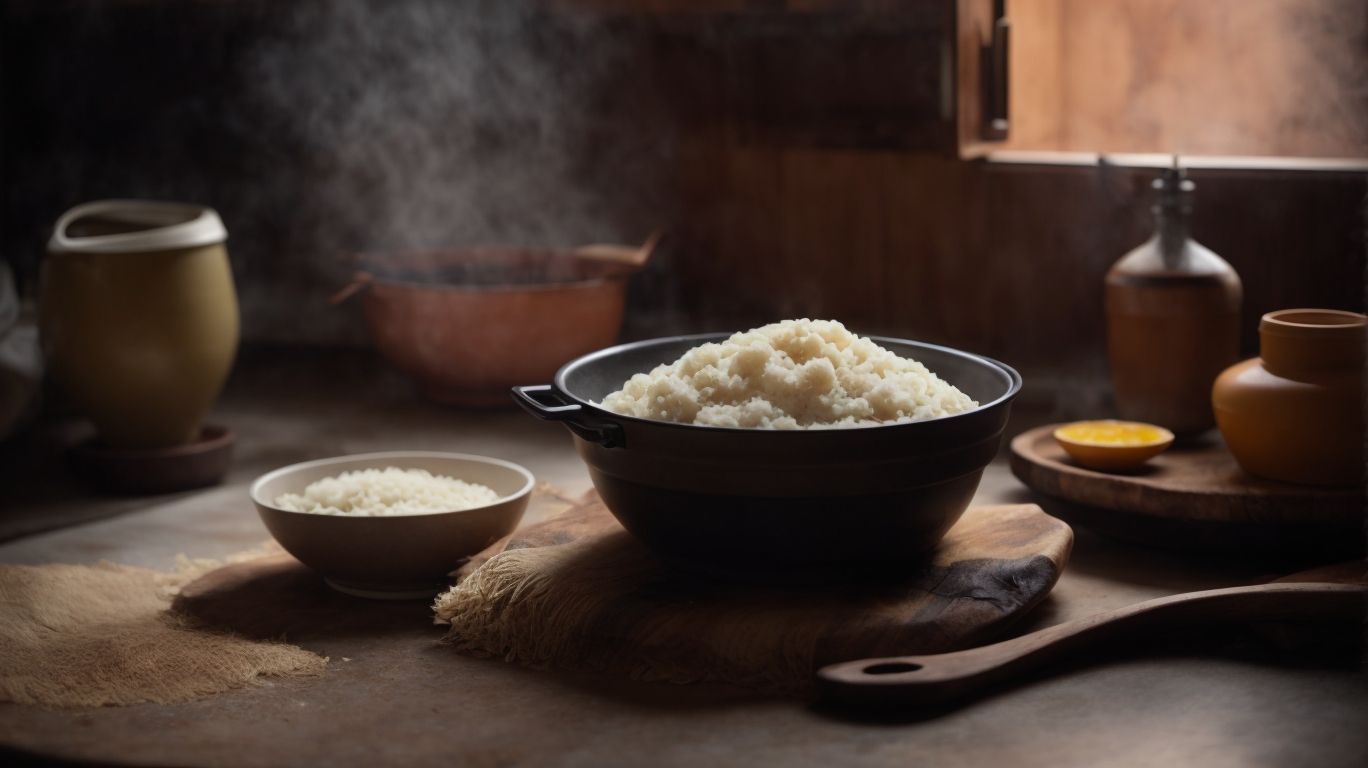
Credits: Poormet.Com – Brandon Roberts
Properly storing leftover Ugali is crucial to maintain its freshness and quality, with refrigeration being the most effective method to preserve the dish for future consumption. By following simple storage guidelines, you can ensure that your leftover Ugali remains delicious and ready for reheating whenever needed.
When refrigerating leftover Ugali, it’s important to transfer it into an airtight container to prevent moisture loss. Placing a piece of parchment paper on top of the Ugali before sealing the container can help maintain its moisture content and prevent it from drying out. For optimal results, store the container in the main section of the refrigerator, away from strong-smelling foods that could affect the flavor of the Ugali.
How to Reheat Ugali?

Credits: Poormet.Com – Joseph Allen
Reheating Ugali can be done efficiently using either a microwave or stovetop method, with the key emphasis on retaining moisture and preventing the dish from drying out during the reheating process. By following proper reheating techniques, you can enjoy a freshly warmed serving of Ugali that maintains its original texture and flavor.
When reheating Ugali in the microwave, it is crucial to sprinkle a few drops of water over the dish or cover it with a damp paper towel to help preserve its moisture. The microwave should be set at a medium power level to ensure gentle reheating without causing the Ugali to become too dry. Stir the Ugali halfway through the reheating process to distribute the heat evenly.
On the stovetop, place the Ugali in a pot with a splash of water and cover it with a lid. Heat it over low to medium heat, stirring occasionally to prevent sticking.
Frequently Asked Questions
What is Ugali and how do I cook it?
Ugali is a type of cornmeal porridge that is a staple food in many African countries. To cook Ugali, you will need to mix cornmeal with water and cook it on the stove until it forms a thick, dough-like consistency.
What ingredients do I need to make Ugali?
To make Ugali, you will need cornmeal, water, and a pinch of salt. Some people also like to add butter or oil for extra flavor.
Can I use different types of cornmeal to make Ugali?
Yes, you can use either white or yellow cornmeal to make Ugali. White cornmeal tends to be finer, while yellow cornmeal is coarser. You can choose whichever you prefer, or even combine both for a unique texture.
How do I know when my Ugali is ready to be served?
Your Ugali is ready when it has a smooth, thick consistency and pulls away from the sides of the pot. You can also test it by pressing it with a spatula or spoon – if it holds its shape, it is ready.
What dishes can I serve with Ugali?
Ugali is often served with stews, curries, or sautéed vegetables. It is a versatile dish and can be paired with a variety of flavors and spices.
Can I make Ugali in advance and reheat it later?
Ugali is best served immediately after cooking, but you can make it in advance and reheat it later. Simply store it in an airtight container in the refrigerator and reheat it in the microwave or on the stove. You may need to add a little water to help soften it.

